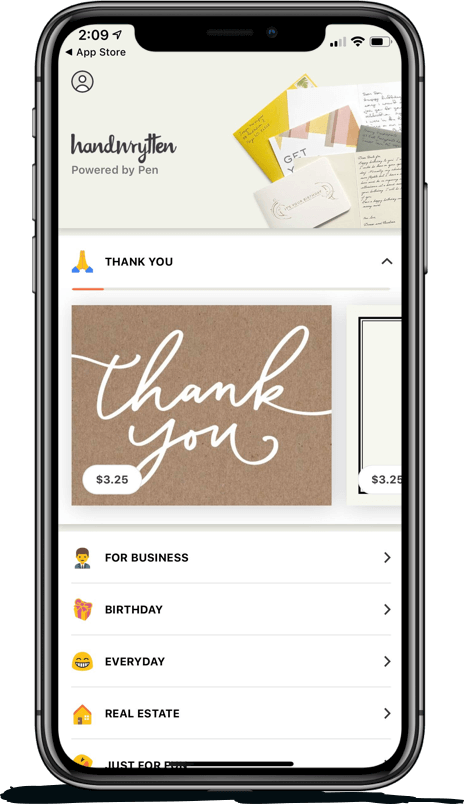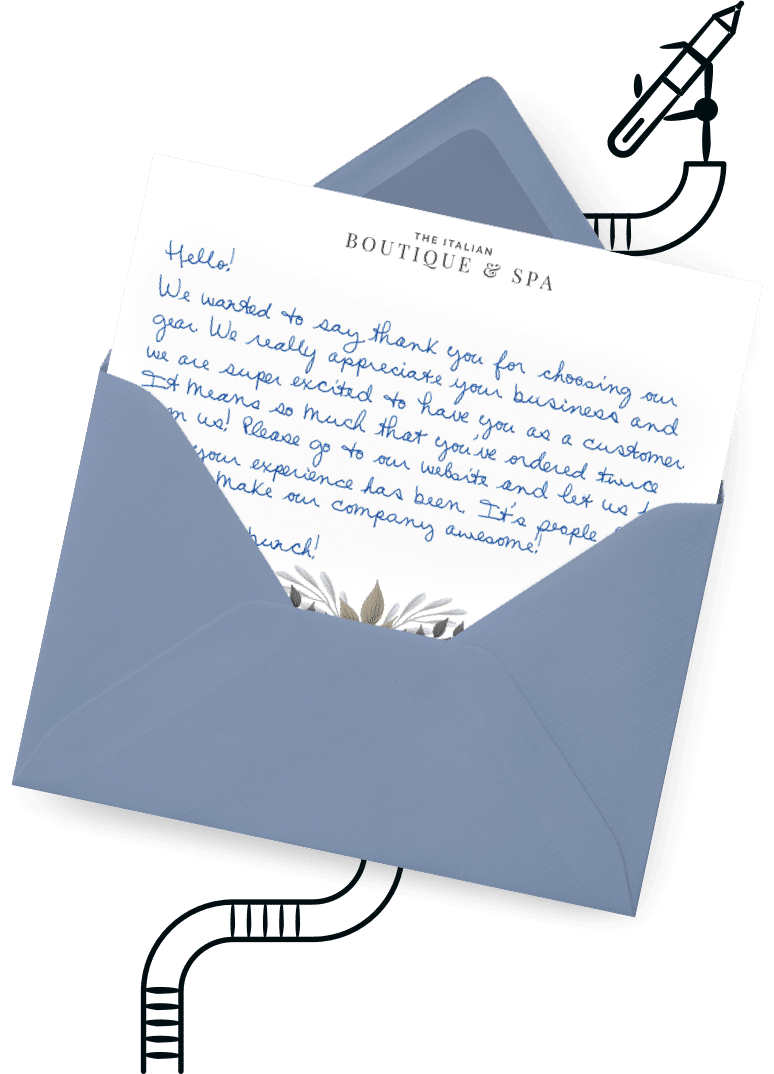
9280 S. Kyrene Rd.
Suite 134
Tempe, AZ 85284
Phone: +1 (888) 284-5197
Email: contact@handwrytten.com



You have been subscribed. Thank you!


To help you successfully deal with challenging customers in the best professional manner, we asked experienced customer service professionals and business leaders this question for their best advice. From getting them involved in the solution to giving your best support while being firm, there are several things to put in practice to help you maintain your composure and exhibit the best conduct when talking to a challenging customer.
A difficult customer is often so consumed by the problem itself, that they’ll fail to see the impact you’re trying to make with your solutions. Rather than dictating terms, get them involved in the problem-solving process either by asking for their inputs or suggestions so that you can divert their attention away from being fixated on the problem or coming in your way from offering a viable solution.
Harry Morton, Lower Street
When talking to a challenging customer, it is important to maintain a positive demeanor at all times because, despite the negativity that may come your way, it is only your commitment to staying positive that can help you win the situation. Difficult customers find it difficult to see reason, and this upsets most people. But as a customer, you have to remember to offer them as much leeway as possible and steer the conversation towards a positive outcome in an accommodating and friendly manner.
Riley Beam, Douglas R. Beam, P.A.
Being flexible is one of the best things you can do when negotiating with a challenging customer. Always be willing to consider the customer’s needs and wants and work together to come to an agreement that is beneficial for both parties. Challenging customers are typically those who are looking for the best deal possible. As a result, they may be difficult to please and may try to low-ball you on price. These can be property buyers who claim they can get a better deal elsewhere or sellers who are unwilling to budge on their asking price. If you’re flexible and willing to negotiate, you’ll be more likely to come to an agreement that satisfies both parties.
Marc De Diego Ferrer, MCA Assessors
When talking with a challenging customer I find it helps to keep in mind that most of the time, people aren’t being intentionally difficult. It’s just that we can only operate from the particular perspective we’re in, and sometimes those viewpoints vary significantly. It’s always a foundational best practice in customer service to respect that other people have different perspectives, and that’s totally fine. We shouldn’t expect every interaction in business to go smoothly, and it generally benefits a business to give customers the benefit of the doubt and respect that they’re just coming from a different place.
Anthony Martin, Choice Mutual
When talking with a challenging customer, it’s essential to start with empathy. If you’re starting at a place with connection, you can more easily build a rapport that will allow you to calm the customer so you can actually move towards solving a problem instead of apologizing for whatever went wrong. Initially, challenging customers might be acting emotional because they’re scared about wasting their time, being taken advantage of, or have high stakes in the resolution coming quickly.
If someone’s already had a hard day, encountering a problem could be the last straw, causing them to have an outburst. Starting with empathy, and building camaraderie towards a solution helps avoid hurt feelings so that customer service teams and customers can work together to come to a solution. Empathy also allows you to set boundaries, establish clear guidelines for building solutions, and ensure that the customer feels in control of the outcome, lowering the stress behind the interaction.
Kyle Risley, Lift Vault
While it’s important to try to compromise with a challenging customer, you also need to be prepared to walk away from the deal if it isn’t beneficial for you. If a customer is being unreasonable or is trying to take advantage of you, it’s okay to walk away. This doesn’t mean that you should never do business with this customer again, but rather that you shouldn’t proceed with this particular deal. Challenging customers can often be frustrating, but remember that not every deal is worth your time and effort.
Peter Lucas, Relocate to Andorra
Very often, when faced with a difficult customer, their main issue is that they have been in contact with your business several times previously but still the problem persists. All they really want is for someone to take ownership and stay with them until the problem is solved. Try to see the situation not as a problem, but as an opportunity to prove your customer service skills. Make sure that you fully understand the issue and reassure your customer that you are intent on finding a solution. Of course, you need to back this up by taking all the steps necessary to find a suitable resolution. This may take some time, you may need to contact others to have the correct actions taken, but keep your customer informed throughout the process. As long as the customer knows that their problem is being dealt with by you personally you should be able to win them over and retain their business.
Colin Toh, Headphonesty
Challenging customers are everywhere, but one thing to always keep in mind when talking to such customers is that, at the end of the day, they just want to enjoy your products. Customers tend to get annoyed when things don’t turn up as expected, and it is your job to help them get to that point. They WANT your product to be perfect, and even if they are annoyed that it did not meet their expectations, you can still work with them to alleviate the situation and make things perfect for them.
Ian Kelly, NuLeaf Naturals
Active listening is one of the best practices to adopt while speaking with a difficult consumer. Do not try to quarrel with or talk over the customer. Allow the customer to speak, even if you are aware that they are misinformed and lack all the facts, even if you know what they will say next. Take advantage of the chance to establish a rapport with the customer as you listen.
Instead of concentrating on the rage conveyed by the customer’s remarks, pay careful attention to what they are saying. Instead of just trying to console the client and de-escalate the contact, you can learn what is driving them to be so upset and how to fix the problem by actively listening. Paying close attention to the angry words so you can answer as soon as you can help you address their issue and make them content again sooner.
Making sure you and the customer are on the same page and assuring them that their issues have been heard and will be addressed are both important components of active listening.
Raviraj Hegde, Donorbox
I believe in keeping your language polite, respectful, and professional when speaking with the consumer. It’s always a good idea to be aware of how your behavior reflects on your company or business and to control any urges to take the challenging customer’s behavior personally.
Maintaining a neutral tone and a cheerful mood that demonstrates to your client that you are receptive to their feedback will help you manage professional communications. You might answer by looking them in the eye or addressing them by name, for instance. Because a customer’s behavior is so complex, it’s possible that you won’t fully comprehend the aspects that affect their choices. Your ability to retain a service-oriented attitude will be aided by remaining objective and professional.
James Crawford, DealDrop
If someone is being rude to me in any way, yelling, impatient, arrogant, or even just accidentally harsh with their words my first inclination is to speak up. But we’re talking about the office here. It’s not typically the greatest course of action to react emotionally rather than rationally. Don’t react rashly; instead, acknowledge the other person’s presumptions and go from there. Impact does not necessarily imply purpose. Although the customer’s tone may make you feel dismissed or misunderstood, rest assured that this is probably not their goal.
Steve Pogson, FirstPier
Everyone wants to be understood. Demonstrate to the consumer that you are paying attention to them. Nod your head and wait for them to finish speaking before responding. Allowing them to express themselves can help you comprehend the problem and allow the client to work through their ideas and feelings. It may be tempting to speak over them, but wait until there is a natural pause in the dialogue.
Mark Blakey, Autism Parenting Magazine
Even if the customer does, stay on topic and avoid personalizing the conversation. Keep in mind that the consumer is only venting their aggravation at you as a representative of your business; they don’t know you personally. Redirect the conversation back to the problem and your plan for solving it. Take a deep breath and carry on as if you weren’t aware of the customer’s profanity or verbal abuse. Giving a reciprocal response will not help the problem and will likely make it worse. Instead, reassure the client that you are available to assist them and are their best immediate option for finding a solution. This straightforward remark frequently diffuses tense situations.
Kathryn Snapka, The Snapka Law Firm
Talking to a challenging customer requires standing your ground firmly without confrontation. Listen to them and express concern while maintaining and reminding the customer of your business’s boundaries. Giving in encourages rude behavior. Being aggressive in your approach turns other customers off. Listening to the other person with empathy can make them feel valued, less defensive, and more cooperative. Because they will be calmer after venting their frustration, it will be easier to talk them into a peaceful end to the problem. Confronting their challenging behavior head-on can escalate the situation, causing brand image issues for your business.
Helmut Biemann, On Demand Painters


Scale your handwritten outreach, creating positive impressions and long lasting bond.
Sign Up Today!


Over 100 designs to choose from or design your own. Our online card customizer makes it simple.
Check Out Our Cards!





